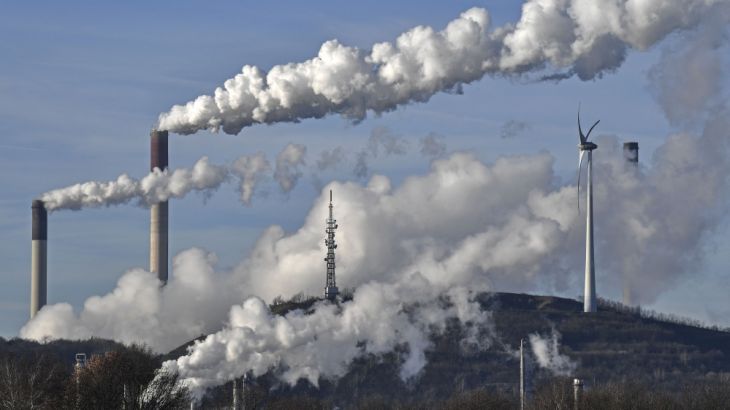World hits record high for heat-trapping carbon dioxide in air
Chief greenhouse gas averaged record levels in May despite reduced emissions amid coronavirus pandemic.

The world has hit another record high for heat-trapping carbon dioxide in the atmosphere, despite reduced emissions because of the coronavirus pandemic.
Measurements of CO2, the chief greenhouse gas, averaged 417.1 parts per million at Mauna Loa, Hawaii, for the month of May, when carbon levels in the air peak, the National Oceanic and Atmospheric Administration (NOAA ) said on Thursday. That’s 2.4 parts per million higher than a year ago.
Keep reading
list of 4 itemsAfter the Hurricane
World’s coral reefs face global bleaching crisis
Why is Germany maintaining economic ties with China?
Even though emissions of CO2 from the burning of fossil fuels dropped by as much as 17 percent in April, it was a brief decline.
Carbon dioxide can stay in the air for centuries, so the short-term reductions of new carbon pollution for a few months did not have much of a big-picture effect, said NOAA senior scientist Pieter Tans.
“It illustrates how difficult it is – what a huge job it is – to bring emissions down,” Tans said. “We are really committing the Earth to an enormous amount of warming for a very large time.”
The findings were released on the eve of World Environment Day, a United Nations initiative to encourage global awareness and action to protect planet Earth.
Every year, a mature tree cleans the air by absorbing 22 kg (over 48 lbs) of carbon dioxide & releasing oxygen in exchange.
Take action to protect biodiversity on Friday’s #WorldEnvironmentDay & every day.
⁰It’s time #ForNature. https://t.co/6VBrz5RxEk pic.twitter.com/lS8y3AbuHW
— United Nations (@UN) June 5, 2020
A series of virtual events and conferences are taking place around the world to mark the day and call for urgent action.
With many cities under coronavirus lockdowns, ecosystems around the world have been healing with smog-free air, less pollution and cleaner waterways
But scientists say the clear skies and other improvements will be short-lived and have minimal effect on global warming as economies begin to reopen.
|
|
Meanwhile, temperatures soared 10 degrees Celsius above average last month in Siberia, home to much of Earth’s permafrost, as the world experienced its hottest May on record, the European Union’s climate monitoring network said on Friday.
The Copernicus Climate Change Service (C3S) said May 2020 was 0.68C warmer than the average May from 1981 to 2010, with above-average temperatures across parts of Alaska, Europe, North America, South America, swaths of Africa and Antarctica.
Globally, “the average temperature for the 12 months to May 2020 is close to 1.3C above the (pre-industrial) level”, Copernicus said, referring to the benchmark by which global warming is often measured.
Under the 2015 Paris Agreement, nearly 200 countries have pledged to cap the rise in the Earth’s average surface temperature to “well below” 2C, and to 1.5C if possible.
The 12 months to May were 0.7C hotter than the 1981 to 2010 average, matching the warmest equivalent period on record between October 2015 and September 2016.
Overall, global temperatures have risen more than 1 degree Celsius since mid-19th century levels, driven mostly by the burning of fossil fuels.